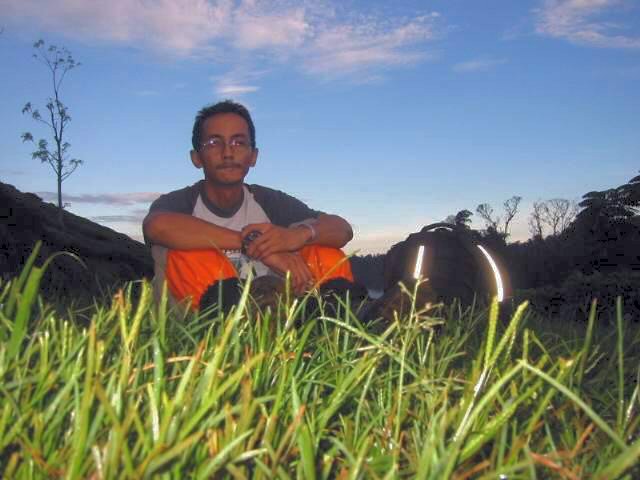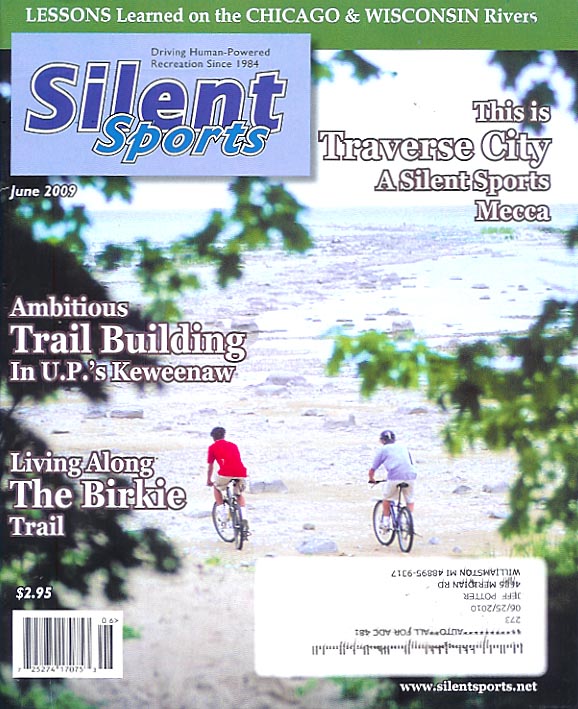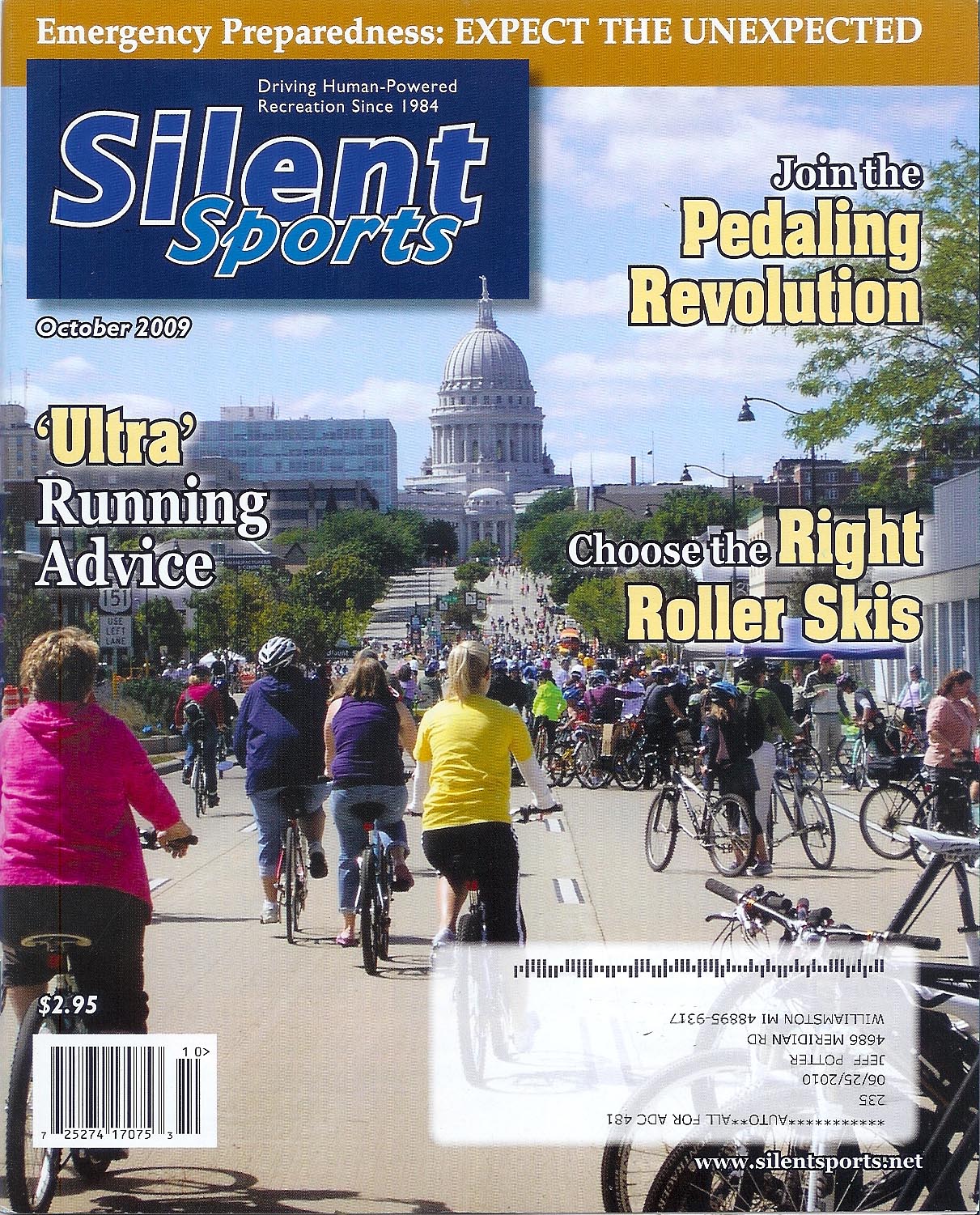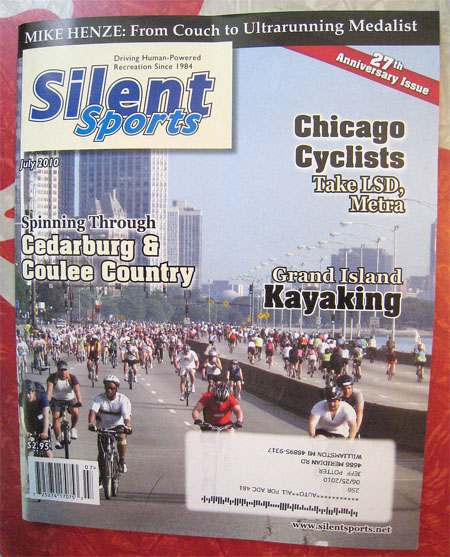UPDATE 2/11/06: I just talked to a guy at a potluck who’s a big hiker. I knew he’d done the AT or parts of it. When I saw him this time he mentioned that Ray’s Way was his scene—which I didn’t recall from when I talked to him before. He was saying that the territory along the North Shore of Lake Superior was just wonderful. Then he mentioned something that blew me away. He said his new way of hiking is 35 miles a day for a week. He said he owes it all to Ray’s Way. He’s not doing it as an extreme sport but for a reason that I’ve heard from other long-distance rando-types, such as biker Kent Peterson: it’s a way to explore a lot of country in a short time. He finds it to be pretty easy. You’re just light and fast. You spend your day checking out the land rather than fussing in camp. If you like camp, fine. But if you want to see some country, go light and fast. Well, that seemed neat. I can see it both ways. I could see plenty of country just staying tented at one beach up there on the North Shore. Quality not quantity, in other words. But, man, that big distance stuff seemed kinda neat. So check it out. Here’s the scoop below… JP
I suppose everyone knows about this already, but if you don’t: there’s an ultralight movement afoot in the hiking world. I presume it’s influencing camping, boating, biking and other outdoor fun.
The main idea is that the weight of what you bring along is the most important factor in whether you’ll have a good or better experience, or not.
The bottom line is that folks have figured out fairly easy ways to hike and camp for a week with only 10-12 pounds of stuff. 12 pounds is their baseline. (I guess this standard “UL” figure isn’t meant to include water or food.)
Here’s a big website for info on this new scene: Ultralight-hiking.com
And here’s a forum full of goodies on ultralight BIKING: groups.yahoo.com/group/ultralightbiking
I’m thinking that the new adventure racing trend is also contributing to all this.
Maybe an idea is also along the lines of Hey, face it, we’re modern people and we’re not that tough. We’re in moderate fitness compared to days of yore (even most tough ones among us). So every 5 pounds we lug along really affects us. Our reality basically has zero relation to the Voyageurs of old: short guys who carried 90-lb packs and lived on a couple pounds of corn a day for months as they paddled 2000 miles to their outposts.
I note that the optimized list of ultralight gear for multi-day packing at the Ultralight website weighs 15 lbs. And costs $1500 all told!
This new boom has probably meant wonderful new biz for many ultra companies. Great. Whatever it takes to get people out there. (Or is it mostly shopping? I sure hope they use what they’re buying!)
Probably the best solution in the end is to just rummage thru your boxes and grab what you have and lash it to yourself or your bike however you can and GET GOING! Learn as you go. Stop and adjust. You’ll know what to do for your second outting.
Actually, the godfather of today’s ultra movement, Ray Jardine, really pushes making your own stuff to go truly lightweight. So it doesn’t have to be pricey.
Here are some more sites for ultra info: John’s page, “Risk’s” page, Great Lakes Ultralight, BackpackingLIGHT Magazine page
(It was very cool reading at several sites about Grandma Gatewood, an old lady who is considered the ‘patron saint’ of ultralight—she hiked the whole AT in ’54, at age 67, nonstop, wearing sneakers and carrying a 20-lb sack on her shoulder.)
I would think that John Muir traveled way light, too.
A guy with the pen-name of Nessmuk wrote the first camping skills book (I think) in 1880, “Woodcraft.” It launched the DIY camping movement. Before then you went in the woods with a guide and it cost a lot. Nessmuk democritized outdoor wandering, basically. Kinda cool. Anyway, his famous kit weighed 26 pounds—and included his canoe! That weighed about 14-16 lbs, giving a camp kit of, you got it, about 10-12 lbs! Just like today’s UL standard.
Now, survivalists and primitive skills folk have long practiced how to get by on little or nothing. This new UL movement represents a cross-over of some of their ideas to the regular camp scene. It’s all a blur, of course.
Now, I note that I don’t yet know of any websites or info about Traditional or Classic camping, where weight isn’t the main point, but probably simplicity is up there, especially if one is carrying the load. If I find some, I’ll let you know! I vaguely recall a canoe mag article about it: going in style, or some such thing. ??
My own experiences with hauling weight aren’t impressive.
Nowadays when I go canoeing I *REALLY* prefer using my old solo kevlar boat and carbon paddle: it’s SO light! When I use my fullsize glass boat instead, man, I know the difference! It’s not too easy to haul for a quarter mile to a river, or up and down big bank-hills, or even getting on and off the car-roof. I mean, it’s exhausting. Then when I paddle with my family in a boat, it sure doesn’t move swiftly anymore! It becomes mostly a matter of current speed. (Actually, we do pretty good—with lots of weight a big, long boat really is essential.)
The last time I went for a dayhike—I mean all day, for 26 miles (coincidentally, a marathon)—I used a modest fanny pack that I stowed a couple bottles of water in along with some apples and sandwiches. Maybe it weighed 8-10 pounds. Ugh! That thing got heavy. I started thinking about how much water I needed to get to the next town and poured out any extra.
My cousin and I went on a 2-day fast-ride on our race bikes a few years back. I maybe brought 10 pounds of stuff in a pannier/bar-bag. The bike felt like a tank! And we went quite a bit slower than usual—but we did get used to the weight after a few hours. It was surprising how a little weight made a bike feel heavy.
On my very first month-long bike tour, just out of highschool, we all filled our panniers to the brim. We were excited about how much those packs would carry compared to backpacks. And, hey, we wouldn’t even have to carry it! The bike would! I think we weighed in with 70-lbs of stuff on the 30-lb bikes. What tanks! After a few days of misery we mailed half of it home and lightened our load steadily for weeks after.
From then on whenever I went bike-touring I knew to bring the minimum.
Kent Peterson, a bike rando rider hero of mine, has honed what he carries on his 500-mile rides. He loves tinkering with making sure he has optimized his goodies. He makes a lot of his stuff himself and modifies the rest. It isn’t fancy but it all works and it’s light. If it’s not light then it’s something he’s totally willing to carry. He does often seem to bring things that other riders don’t—he just wants to do it. While he does attend to the weight of everything he’s a guy who will also give himself astonishing handicaps for whatever personal reason he has at the time: like doing the upcoming Border to Border Continential Divide Race on a one-speed, I hear.
Which brings up the idea of intentionally going heavy. Or, not heavy, but bringing what is worth bringing without putting weight first.
I’d like to see a comparison of canoe trips done, say, with the ultralight approach versus the traditional classic approach. One in a kevlar blaster boat with bare minimum gear. The other in a wood/canvas boat, wood-crafted paddles, hatchet, rifle, folding chairs, table, picnic hampers, wine bottles, cheeses, steaks, bamboo flyrod, etc. I suppose both trips would be good in their own ways. So much for that test.
Maybe throw in a 3rd way: the subsistence way. Bring the minimum but even more-so: make yourself forage, hunt, fish, to eat.
Then there’s the fully-integrated concept which also gets me revving from time to time: have a folding bike that pulls a Kruger-style decked kevlar C1 which is rigged as a trailer, with a wheel-sling and luggage stowed in the boat. So you can go anywhere, do anything, with one rig. Put the bike in the boat and paddle, then ride to the next water. Oh well, it’s an idea. I’ve even cogitated about a fully-faired (canopied) HPV bike that floats—which has wheels and a propeller, where you remove the wheels (and add gaskets) to go pedaling thru the water and where the seat folds flat to make a place to sleep. All in one. Tent, boat, bike, cargo-space—all in one. (The bike would go better in more weather conditions—be warmer/cooler and dryer than usual—and maybe even faster.) That’s gotta represent some kind of weight-savings.
But maybe I’m getting carried away.
I think the main thing is to just grab what you have and get out there.
A couple years after I’d read basically all the solo voyager books out there, I was marveling as to what is the best boat to voyage with, based on their stories. One guy used this kind, another guy used that. They were all different. It was great fun comparing and trying to figure out what the ideal all-round boat would be. I even ended up living on my own old wood boat for awhile, and going on amazing little jaunts in it. When it suddenly struck me: they all just went with what they had. As it broke along the way, they fixed it, with what they had. That’s how it’s done! Sure, a few fancy lads had something just right built beforehand but most of the soloists were desperate lads for adventure and just WENT.
When I went for a bike-ride in Europe in the 80’s I saw an interesting contrast. The locals who we rode with and camped with were often riding along in jeans. I recall once taking a long time to catch up to a lady riding in a skirt on a 3-speed style bike, way out in the country, she had a grocery bag in a basket up front and a small guitar tied to the back. She arrived at the same campground an hour or so after I did, but she was bike touring just like I was. I saw locals touring while wearing a big straw hat. The only people I saw “fully equipped” were Americans. They looked gaudy and garish. They were the only ones with helmets. They were nervous, smiled less. They were the only folks who I heard having spills. One girl we came across fell and hit her helmet and was so shaken up she flew home hardly into her tour. She seemed skittish anyway.
This makes me think of another good angle regarding outtings. Mine are often multimodal. There’s a trip, a hike, some boonies, but also parking lots, vacant lots, bars, local scenes. I think it pays to travel and appear as the locals do. Carrying a mountain of hightech stuff seems dicey in several ways. A competent person traveling with a compact, subdued load doesn’t stand out or get in anyone’s way or attract any attention. I’ve never had trouble with locals or with theft. (No one would want my beat-up stuff anyway.) You don’t want to look vagrant, tho. Competent. Tasteful. If you go that way, you’ll be included in whatever scene you’re in. That’s cool.
I don’t see much written about Vizqueen tarps, KMart tents, cheapy sleeping bags, Coleman canoes, Converse “hiking boots” or Budweiser. Sure, it’s crap. But it’s cheap and what anyone can afford. You gotta know that most reasonable everyday adventures are being done with this stuff. So that’s another way to go—proven and, yes, suffered thru, by many, many folks. And it goes to show, again, that it’s not really the stuff that makes the trip but the HUMAN who’s doing it.





